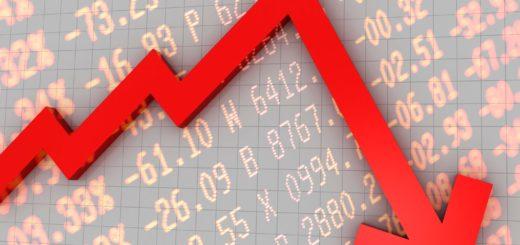This Time is Different
THIS TIME IS DIFFERENT
The economic crisis of the 2020s will not play out like 2009 October 26, 2018
The largest asset bubble in history is in the process of bursting. Many assume this will play out just like the 2009 financial crisis with central banks swooping in to save the day, however this time is different.
Few imagined how far the Fed would go to stave off the 2009 crisis. First interest rates were cut to zero and held at that level for almost a decade. Then came Quantitative Easing (QE1, QE2, QE3 and QE4) where the monetary supply was expanded via purchases of bonds and mortgage backed securities. At its peak the Fed was spending 40 billion on these assets. The buying spree continued until October 29th, 2014, at which point 4.5 trillion dollars had been added to the Fed’s balance sheet, and a new bubble had been inflated.

In 2017 the Fed began selling (or unwinding their balance sheet). By October of 2018 securities were being unloaded at a rate of 50 billion per month.

The unwinding of the fed balance sheet has the exact opposite effect as quantitative easing. When a central bank sells an asset the money from the counter party is extinguished. Quantitative tightening thus reduces the amount of liquidity (available cash) in the system. The money supply is shrinking, and it’s shrinking significantly faster than it expanded.
To further complicate matters, the federal reserve began gradually increasing interest rates in 2015, and has yet to bring them back to pre-crisis levels. Like quantitative tightening, increasing interest rates has the effect of reducing liquidity.

Now many assume that the fed may be forced to halt the unwind process or even reverse course on rates as market losses accumulate. In fact markets are pricing in a 28 percent chance of a rate cut by the end of 2019 and a 0 percent chance of an increase. This is optimism is premised on how central banks responded to the 2009 crisis, and assumes that such easing would have the same effects as before.
This time around, however, the Fed has no ammunition (and this according to Dallas Fed president Richard Fisher.) When the dot com bubble burst in 2001, and the housing bubble burst in 2007 the fed slashed rates aggressively, injecting the system with cheap credit. This expanded the money supply via fractional reserve banking (banks are allowed to loan out money they don’t have). But with the Fed rate at 2.4 percent as January 2019, cutting back to zero would have a negligible effect.
After Powell’s statement that the Fed balance sheet reduction was set to continue on auto pilot set markets tumbling, he attempted to calm investor’s nerves with by saying that “the Fed will be patient” with monetary policy, and that they were “always prepared to shift the stance of policy and to shift is significantly” in order to achieve its dual mandate of full employment and stable prices. This may sound quite dovish, but what this actually means is that the Fed intends to hold the course until employment numbers start to tank.
Employment is a lagging indicator. By the time monetary tightening starts causing layoffs, the crisis will have a momentum that rolls right over a 2 percent rate cut. Halting the QE unwind would also be too little too late by that stage. This leads many to assume that when a full scale crisis erupts the Fed will resume easing.
What few realize at this point, is that the Fed has no intention of doubling its balance sheet. If easing does resume it will not be proportionate to the crisis, nor will a new bubble be inflated while Trump is in office. The consequences of decades of monetary can kicking will finally be allowed to play out.
With Trump’s trade war with China, the government shut down over “the wall”, and political chaos all but guaranteed as incoming Democrats begin wielding subpoena power, there will be no need to look far for a scapegoat. Trump made this even easier by taking credit for the stock market on the way up.
Here’s where things get interesting. A cornered animal is dangerous, and Trump is nothing if not unpredictable. He will not go down without a fight. Nor will his base be easily turned.
This time is different. Very, very different.
To be continued…
THE YELLOW VEST PROTESTS ARE A CANARY IN THE COAL MINE
Civil unrest has broken out in France as a global economic downturn is just getting underway. The significance of this warning sign should not be underestimated. January 04, 2019
Civil unrest has broken out in France as a global economic downturn is just getting underway. The significance of this warning sign should not be underestimated.
The Yellow Vest Protests in France (les gilets jaunes) were never about a fuel tax. This was made clear when Macron caved in to their initial demands and cancelled it. Nor is this merely an expression of Macron’s unpopularity (though a 25% approval rating certainly doesn’t help). A deep undercurrent of discontent has been rising in western Europe, and the conditions which are fueling it are set to accelerate.
A 2015 study which compiled data on nearly 100 financial crises since 1870 observed that far-right parties are the primary beneficiaries of financial crashes. Further research demonstrated that wealth inequality exacerbates this trend.
When living conditions deteriorate and a population is frightened, people tend to gravitate towards strong leadership and groups which offer a sense of collective identity and order. National, religious, and racial heritage provide low hanging fruit. The left typically underestimates these forces, and overestimates the power of their own ideologies. Also their contempt for tradition and authority undermines their ability to organize much beyond brief shows of collective force (Occupy Wall Street for example).
Researchers have found that populist surges are usually temporary, and that within five years voting patterns usually return to their pre-crisis status quo. However in the aftermath of the 2009 financial crisis the response was different. This time around populist movements were still on the rise a decade later, and were gaining strength as a new crisis approached. Why?
Most of the money created by central bank stimulus over the past decade was funneled to the wealthiest strata of society, who mostly reinvested it rather than spending it into the economy. As a result inequality levels increased globally. In 1980 the top 1 percent held close to 10 percent of the wealth, by the year 2016 this share had doubled to 20 percent in the United States.
As central banks begin reversing stimulus (quantitative tightening), money is being sucked out of the economy faster than it was injected. Monetary and credit conditions are being tightened simultaneously into a crash. As this crash unfolds, and living standards are meaningfully impacted, we will see upheavals throughout the West make the yellow vest uprising seem quaint. History will remember them as a canary in the coal mine.













